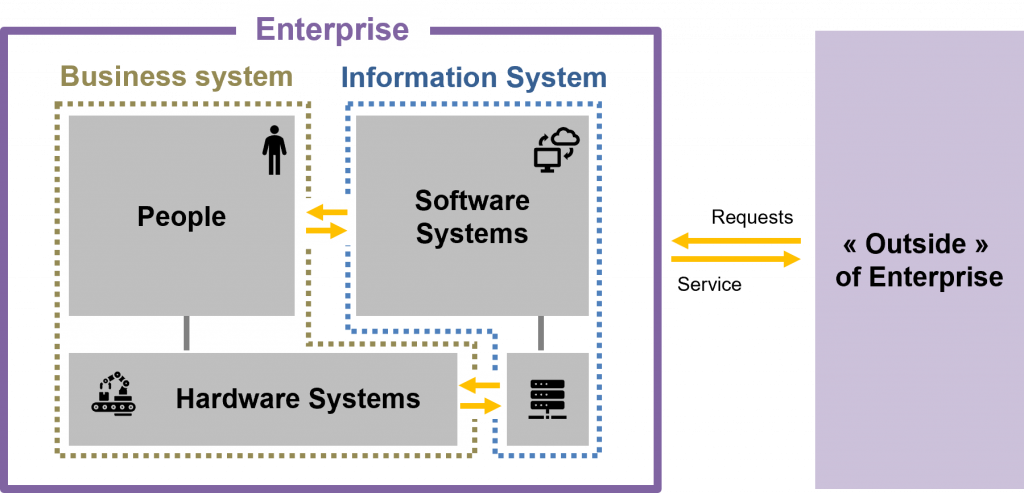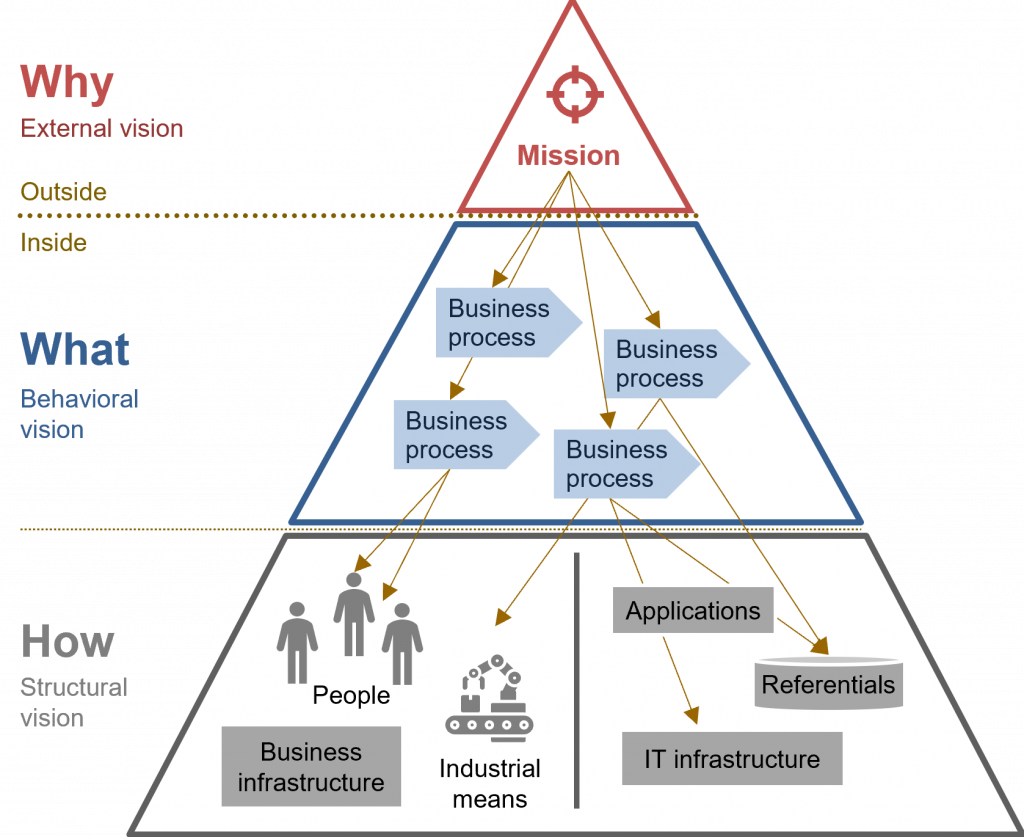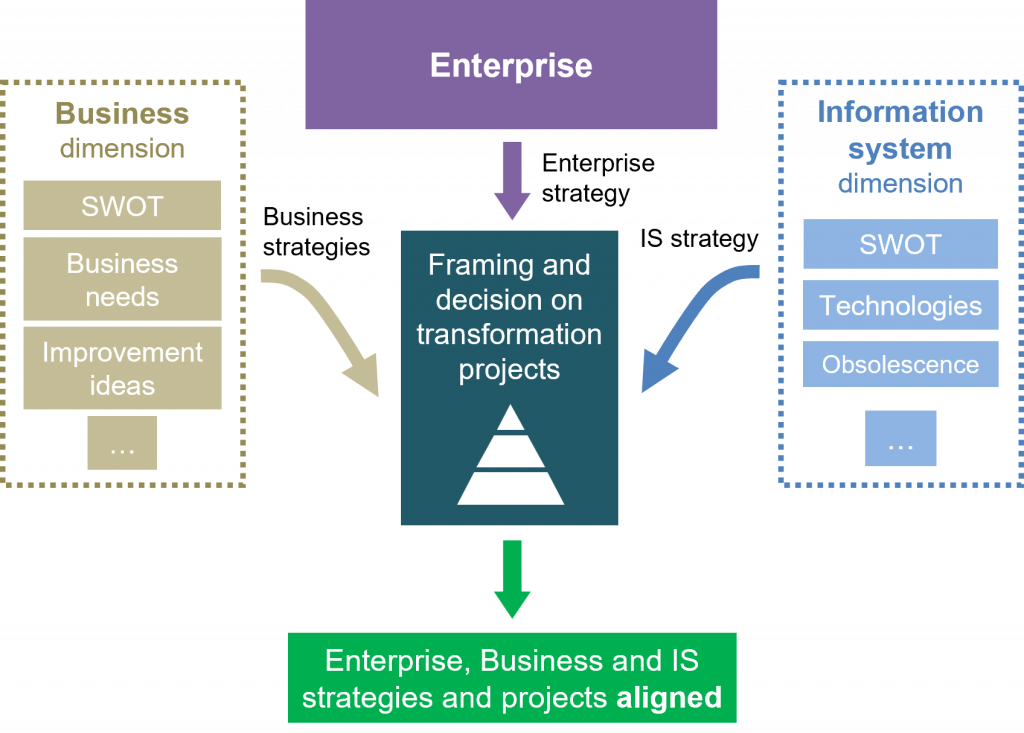Enterprise Architecture
Serving a Strategic and Integrated Digital Transformation
Architecture for digital transformation involves considering digital transformation first and foremost as a global business transformation, with the paradigm of aligning technologies, strategic business objectives, activities, working methods and business needs in an integrated vision that ensures harmonious and effective transformation.
This involves describing the company as a system, with a business dimension (environment, processes, roles) and a technical dimension (information system, functionalities, applications), as well as the dependencies between these 2 dimensions, in order to carry out comprehensive, structured analyses and inform transformation decisions.

The absence of an enterprise architecture approach within the context of a digital transformation can lead to the following common pitfalls:
Pitfalls
Consequences
CESAMES’ approach
An integrated and collaborative approach
The aim is to analyze the company (or any “part of the company”) as a complete system to be transformed, focusing on managing its complexity in a holistic way. Viewed as a whole, the company operates within a dynamic environment that must be thoroughly understood to ensure that any transformation leads to a new balance that addresses the needs and constraints of all stakeholders and members of the organization.
Continuously integrating the business and information system visions, in an intrinsically collaborative approach, and thus avoiding ‘silo’ approaches driven by the IT or business departments. The link with product architecture is also essential in enterprise architecture.
What makes us different?

Enterprise Architecture :
a source of value in transformation
Seeing beyond the tools
While technical expertise and knowledge of the tools driving digital transformation are important, enterprise architecture ensures that the business lines, and ultimately the company, reap the full benefits of these tools by transforming themselves.
Mastering Transformation Investment
Enterprise architecture enables the optimum ratio to be achieved between transformation costs and the value generated by the business.
Optimizing transformation projects
As a natural support for identifying inconsistencies, misalignments, and opportunities for synergy, enterprise architecture enables the rationalization of projects and allows them to be managed in a structured and efficient manner.
Fostering Collaboration Between Business and IT
Enterprise architecture creates mutual understanding and boosts collaboration between business and IT stakeholders thanks to a structured framework that aligns business objectives with technological solutions.

